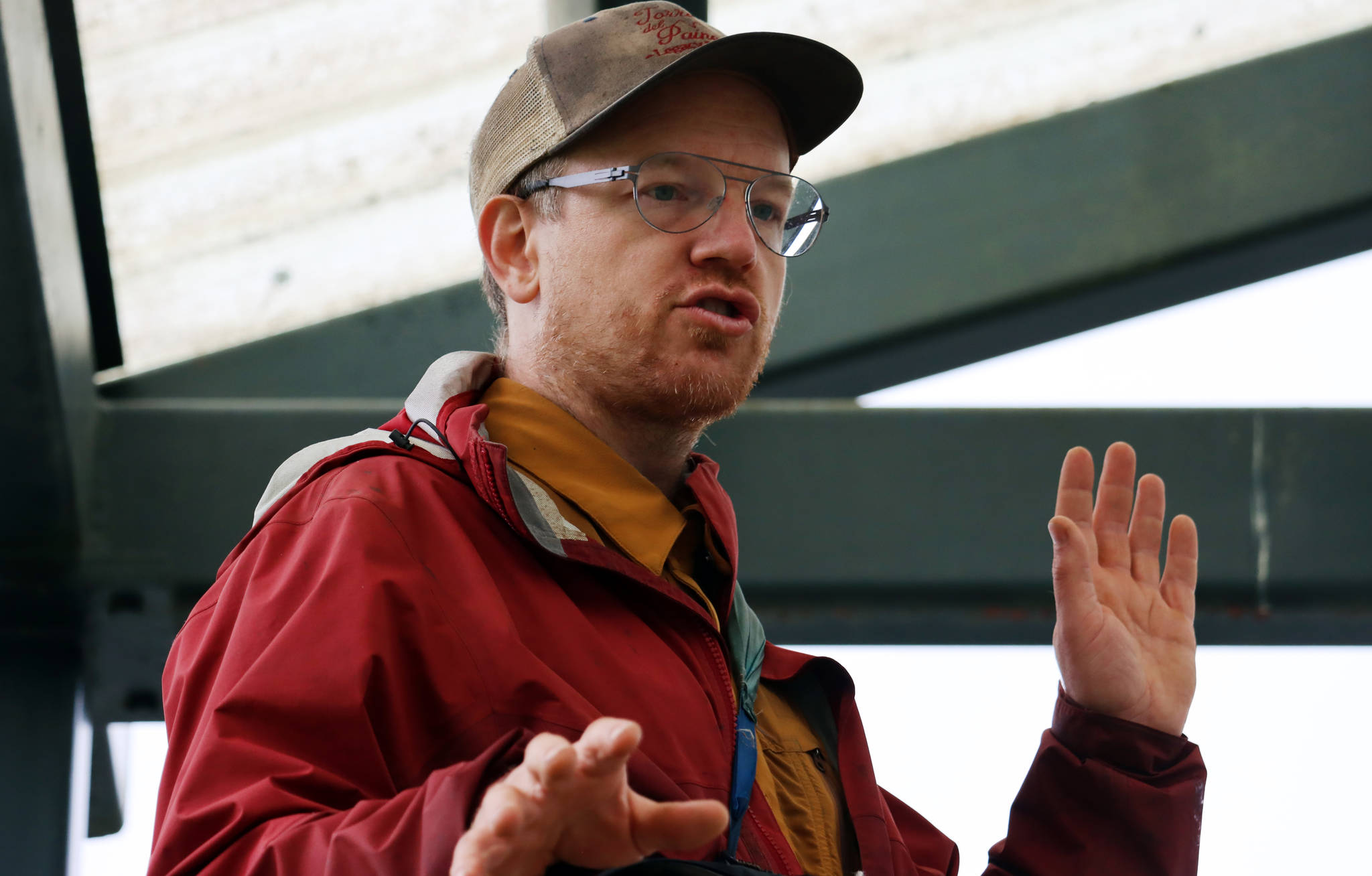A group of city officials, scientists and members of partner organizations investigated signs of old and perhaps future landslides in the Lemon Creek area.
While the concern for landslides in Lemon Creek in the immediate future are low, said city emergency program manager Tom Mattice, it’s something the city will be evaluating and updating the public on.
Landslides are a large concern in the Southeast Alaska, where high rains and seismic activity can shift earth loose, sending landslides thundering into the valleys below.
A scientist researching landslides in Prince William Sound, Bretwood “Hig” Higman, found a number of overlooked signs that pointed toward the possibility of instability leading to landslides.
“One of the things that jumped out of us was a super obvious instability,” Higman said during a news conference after walking the area above Dzantik’i Heeni Middle School with other members of the working group. “It was a red flag that we need to do a little more looking around for the obvious.”
[Company holds cookout in Tenakee Springs for new aircraft]
The area on the Thunder Mountain/Heintzelman Ridge above Lemon Creek is one of about 20 areas in the state Higman has marked for further investigating.
“We found some obvious signs and we have some ways to track those and the rate of change. We’re going to start working with some professionals in the region to see what we can do. We’re just really fortunate to have university partners in this community,” Mattice said. “We didn’t really have a budget for this, but we have people who care. We’re going to start investing a little time and effort into understanding more.”
A number of deposits, none older than approximately 500 years or so, mark where other landslides in the past have spilled down the mountainside, Higman said, roughly dated by the exposure of the stone, the thinness of the soil and the age of the nearby trees.
“These (landslides) can be incredibly mobile,” Higman said. “But one thing that’s incredibly reassuring is these deposits are not like that. They stopped right here at the bottom of the slope.”
Several area residents attended the news conference.
“I think they were very straightforward,” said resident Larry Woodall, who added that the information provided was “a little bit reassuring.”
The city is currently beginning another landslide and avalanche study for the city, Mattice said.
“It doesn’t mean it’s going to happen,” Mattice said. “But it’s important for people to recognize it’s a historical event, it does have modern day potential, and it’s something we’re keeping an eye on.”
Juneau residents walking the areas of Thunder Mountain can help, Higman and Mattice said, by looking for telltale signs that the mass of earth is moving.
“Part of the trick is you want to get up there when there’s no snow up there. You’re looking for potentially subtle changes,” Higman said. “Raw soil, tilted trees, roots stretched across cracks, sinkholes. We were looking for that today. We did not find it.”
Observations can be sent to Higman’s nonprofit, Ground Truth, though he noted he may be slow to respond due to field work.
The dangers of a landslide rolling down into Lemon Creek, if it happened, would be many, and options for preventing it, short of evacuating the entire area, would be few, Higman said.
“People say, ‘If we know it’s going to fall, let’s just go let it loose anyway,’” Higman said. “There’s not a way to do that, outside of the craziest sci-fi.”
In Southeast Alaska, steady rainfall is one of the biggest dangers for causing landslides, alongside the Ring of Fire’s tectonic instability.
“Those are top of your list for possible triggers,” Higman said. “Extreme rain and earthquakes.”
• Contact reporter Michael S. Lockett at 757-621-1197 or mlockett@juneauempire.com.

